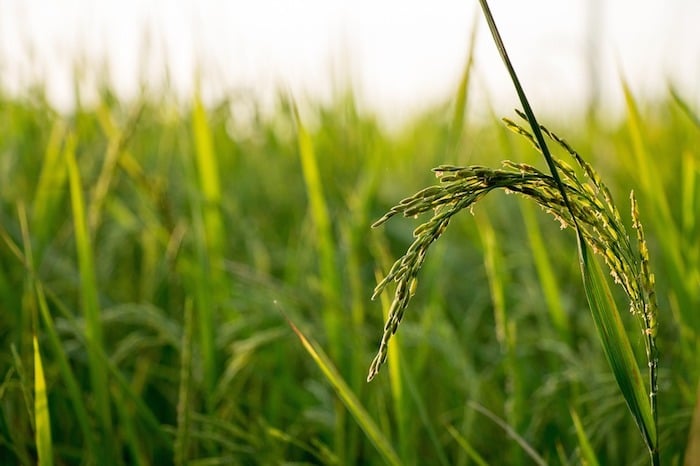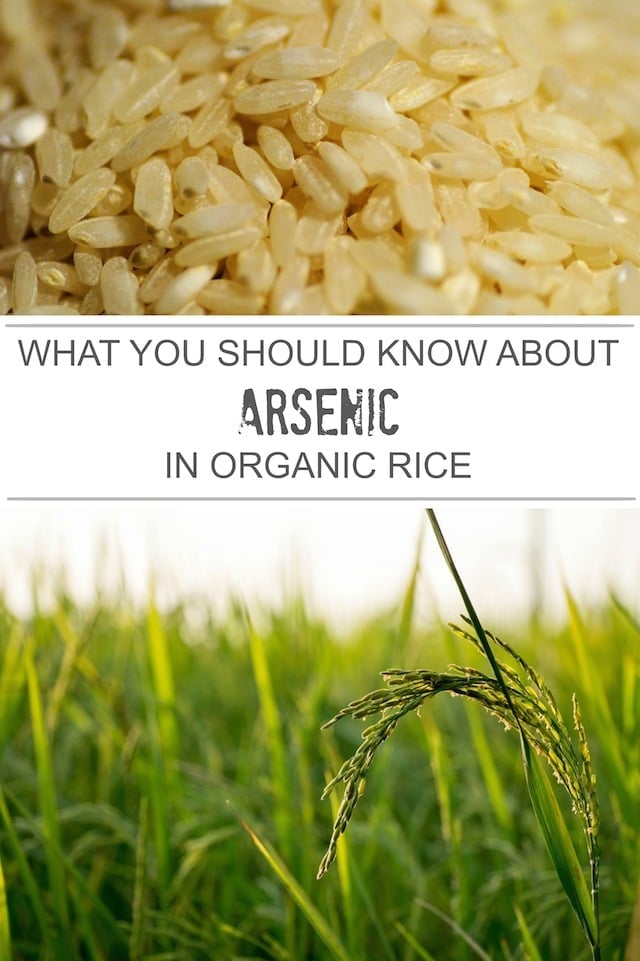What You Should Know About Arsenic in Organic Rice
The latest buzz about what’s in our food has caused some parents to feel powerless. “Pink slime” in school lunches, BPA in canned goods, and now the latest buzz is about arsenic in rice… even organic rice.

We’ve asked green living and gardening expert, Anna Hackman of Green Talk, to explain what you need to know about arsenic, what you can do to limit your family’s consumption, and most importantly – how to get your voice heard on what you won’t tolerate in your food.
Choosing Safe Rice
Recently I wrote about a Dartmouth study which revealed that high levels of inorganic arsenic were present in organic brown rice syrup (“OBRS.”) The team focused its study on toddler formulas, energy performance products, and cereal bars. The current way of farming rice in soil which contains man-made, cancer causing arsenic is the problem. Now what?
What Did the Rice Companies Say?
I happen to use organic brown rice syrup (“OBRS”) and couldn’t believe what I was reading. Lundberg is the maker of OBRS. Their public relations’ firm sent me the following response:
As we look into the findings of the study released on 2/16/12, we will continue to investigate, evaluate and acknowledge the research while continuing to place the consumer’s health at the forefront of our concerns. It is important to remember that U.S. grown rice has been a wholesome source of nutrition, both here at home and internationally, for over 300 years. Since arsenic is naturally occurring, trace levels are present in all rice, and a wide range of fruits, vegetables, grains and seafood, as well as presence in the air and drinking water.
They also indicated that in the past, they didn’t test their rice. Since my email exchange with their PR firm, Lundberg posted on their website their course of investigatory action.
But here is the rub…
- Arsenic is an element naturally found in earth’s crust. But the issue at hand is inorganic arsenic which is man induced from pesticides, contaminated water, and other factors.
- Why haven’t the rice food companies tested their rice prior to the Dartmouth study? Can they honestly say they didn’t know about Professor Meharg’s 2007 study which spelled out the dangers of arsenic and rice. (FYI, Dr. Andrew Meharg is a bio-geo-chemist at the University of Aberdeen in Scotland. He is an expert on arsenic in the environment.)
- In 2009, the European Food Safety Authority stated in their article “Scientific Opinion on Arsenic,” young children under the age of three are most exposed to inorganic arsenic. They further stated that their exposure is 2 to 3 times greater than an adult.
Oops, they didn’t see that article either?
 What Can You Do?
What Can You Do?
Since we obviously can’t rely on the companies to test nor the government to protect us, here are some guidelines.
- Read ingredients when you buy a product. The Dartmouth Team advised parents of young children to talk with their doctors whether they should switch from products containing brown rice syrup. There may be medical reasons why your child is on a particular formula. (Remember, Brian Jackson, the lead author on the study said the problem was with brown rice syrup, organic or otherwise.)
- Don’t panic. Scientists at Dartmouth and other universities are currently studying the short term effects of exposure to low doses of arsenic in children and infants. At this point, very little is known. According to Jackson’s team, you don’t need to have your child tested for arsenic exposure since arsenic is excreted within 2-3 days.
- If you are unable to breastfeed your baby, make your own baby formula. Sarah at the Healthy Home Economist, a real food blogger, suggests making your own organic baby formula. Note, Sarah advocates the use of raw milk so this may not be an alternative for you.
- If you have a well, have the water tested for arsenic.
- Check your energy bars to see if brown rice syrup is a primary ingredients. The Dartmouth team states consuming 2 to 3 bars a day could equal or exceed the EPA water standards for less than 10 parts per billion of arsenic.
- Switch up your rice grains. Simply mix up your rice consumption with other rice grains. John Duxbury, Professor of Soil Science and International Agriculture at Cornell University suggested eating basmati rice imported from India and Pakistan and jasmine rice from Thailand. These particular rice plants are different than brown rice. He stated via email, “Basmati and Jasmine rices do indeed seem to have lower levels of arsenic, which could be because of genetic differences in uptake, but also differences in growing environments. We have found the latter to be more important.”
- Professor Meharg suggested sourcing from the Himalayas and Egypt. He further indicated that rice grown in California has a lower arsenic level then the South Central US.
- Always wash rice before cooking. A UK study revealed that rinsing rice for about 3 minutes and then cooking in six parts water to 1 part rice lowers inorganic arsenic by 45%. The researchers noted that steaming did reduce the inorganic arsenic; however, their results were inconsistent with the different grains tested. The study also noted that exhaustive rinsing (a practice in India) may help to reduce the levels further. In researching Indian rice cooking, one recipe recommended soaking your basmati rice for 1/2 to one hour in cold water. Drain the water after soaking.
What Can the Rice Industry Do?
Use less water. Professor Meharg advised, “Grow rice more aerobically, it still maintains good yields this way, and this massively reduces grain arsenic, though cadmium can then become a problem.”
Professor Duxhury stated, “To reduce arsenic in rice, farmers need to grow rice under less reduced soil conditions to limit or prevent the dissolution of iron oxides. Draining rice fields periodically, growing rice with alternate wetting and drying, or on raised beds with water in a furrow are all practices that farmers can use to reduce arsenic in rice. Our experience is that total arsenic can be reduced to about half of the value obtained when rice is grown in a flooded field.”
Select rice breeds of low grain arsenic. Professor Meharg explained that farmers would be “simply exploiting natural genetic variances as traditionally utilized in rice breeding.” He assured me he wasn’t referring to the use of GMO rice seeds.

 What Can You Do?
What Can You Do?
It’s 2021 and this stuff is still going on. Upon looking through baby products they seem to stuff rice into so much of it. Does this fruit puree really need to contain rice ?
The more I look into it the crazier I sound. The only response I seem to get is “Not my rice” or “our goverment makes sure OUR food is safe”.
It takes such a small effort to make your voice heard to those in the industry that have the power to make a change. We usually spend much more time complaining verbally to family and friends. It’s only when their is a risk to profits that the industry will effect a change. Obviously, when a change is implemented, the price of the product may rise….but it will be worth that reasonable change to improve health and longevity. let’s all get together and ensure we can enjoy our rice products safetly!
Thanks so much for posting about my petition. Rice is in so many products and eaten by so many people. Thanks again for the support. Anna